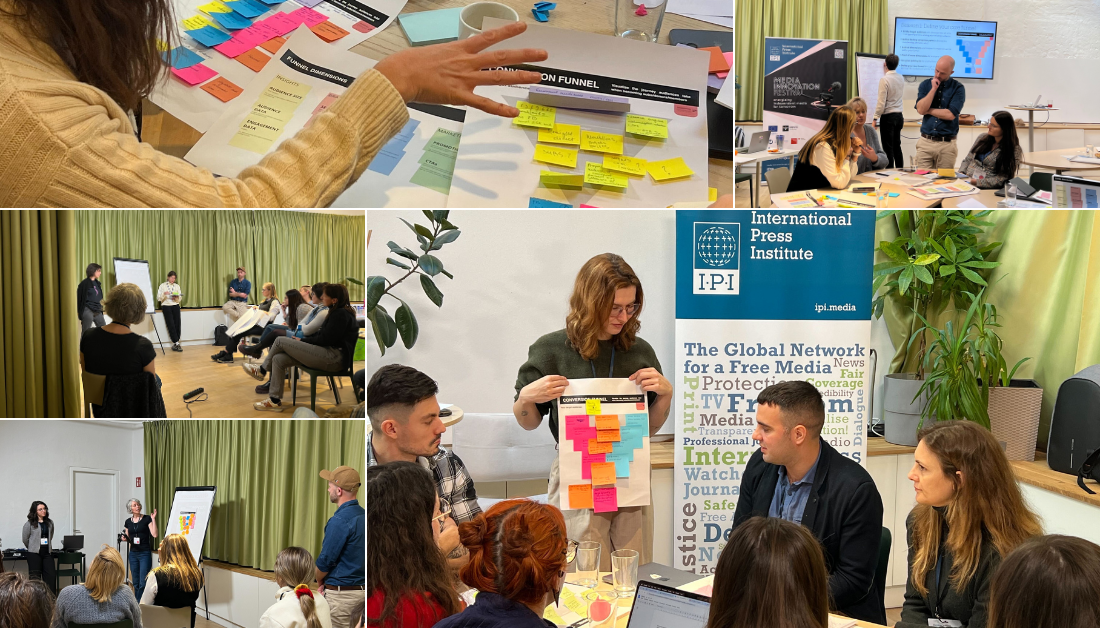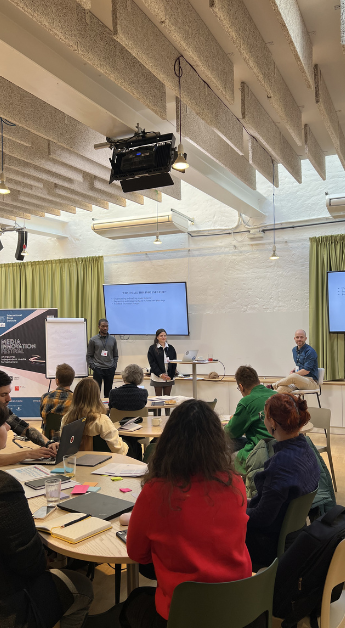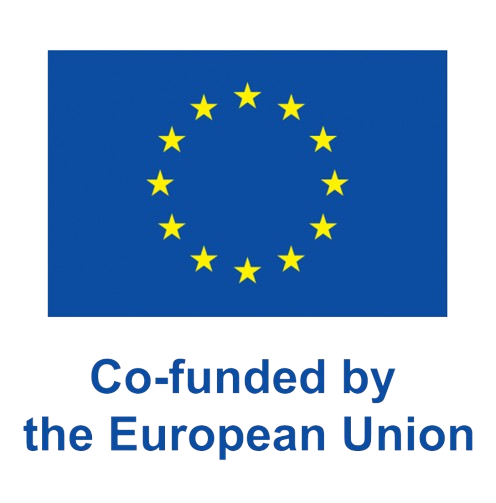This text comes from IPI’s newsletter The Outlook. Sign up to receive future editions directly to your inbox.
In this week’s newsletter, we invite you inside the IPI’s Transition Accelerator Bootcamp and down the audience funnel, the topic of our second day of training with Morten Ro. Catch up on the previous Bootcamp newsletter on audience research to get the full picture.
During the IPI’s Transition Accelerator Bootcamp in Vienna, our trainer, Morten Ro introduced the audience conversion funnel, giving the participants an opportunity to work on their specific strategy and open it up to feedback from the other teams
The challenge: Mapping the reader’s journey

“The conversion funnel is the journey your audience takes before subscribing,” and designing a well-thought-out funnel is a critical step towards incorporating readers’ needs at all stages.
Here are the things to keep in mind for your funnel design process, from Morten Ro’s training:
- Use funnel design as an integral part of your organization’s strategy, starting with awareness-building and a consistent offer for readers to engage with your product.
- “Throughout the stages of the funnel, make a consistent offer to people to spend time with you and use your product” – How are you making a case for the people who are visiting you?
- Acknowledge the diverse paths users take in their journey, as they navigate through multiple channels and have varied needs. Adapting the funnel strategy accordingly will ensure a comprehensive approach.
- Reflect – how should you spend your energy on the different channels/stages?
- Consider alternatives to the funnel, like Richard Höchner’s concept of concentric circles which emphasizes the reader’s progressive journey towards a stronger connection with your organization.
- For those in the middle of workshopping big changes (like targeting a new audience), make a funnel for existing practice and a separate one for after the change. This strategy helps maintain focus and improves decision-making throughout the transition.
- Consider the post-conversion funnel and where your readers go next.
The Solution: Building towards a community
“It’s super useful to get a chance to sit down and think – usually we do not have the time for this. But it can be hard to adopt this product mindset if you are used to a journalistic kind of thinking”, said Iliana Papangeli, the Managing Director of Solomon.
It’s true that for many small teams, introducing this kind of strategic thinking can be difficult, but in the long run, audience research coupled with conversion funnel design can stimulate a path of organic growth. The process is not just transactional reasoning, but building a sense of belonging, and community and nurturing your users is a big part of it.  Project Syndicate‘s funnel has been in the making for a while and the team shared their takes on the process during the Bootcamp.
Project Syndicate‘s funnel has been in the making for a while and the team shared their takes on the process during the Bootcamp.
Since introducing a paywall in 2017, the team realised “the lower engaged groups were not even reading enough to hit the paywall”.
The solution came from a data-driven funnel review, which introduced a hard paywall across the board. PS’s user journey tracking looked at both, the vertical funnel but also the horizontal pipe to see how users move once reaching the bottom of the funnel, informing which content facilitated the retention. For example, in an election year, articles on politics have been driving conversion, but culture and lifestyle content are behind the retention drive. To optimize your organization’s audience conversion funnel, consider the following strategies:
- Audience Segmentation: Tailor your approach for distinct audience segments by offering personalized content, experiences, and products.
- Consistent Engagement: Work out a consistent offer for users to engage with your content throughout the funnel stages, establishing trust and showcasing your unique value.
- Multi-Channel Strategy: Adapt to users’ diverse journeys by implementing a multi-channel strategy that addresses their varied needs and preferences.
- Data-Driven Analysis: Regularly assess your audience’s behavior and preferences to refine your strategy and improve user experience. Consider tools like Tableau to help you along the way.
- Loyalty and Retention: Invest in nurturing existing subscribers to retain them, creating a sense of belonging and fostering a loyal community. Even if the number of users reaching the end of the funnel might be relatively low, those are your most valuable and loyal audience members.
- Start small, not every journalistic product needs a lot of granularity, but it is important to take charge of your reader’s experience.
Next step forward: IPI’s Media Innovation in numbers
This has been a busy year for IPI’s Media Innovation team and our partners. While we have even more resources and opportunities coming your way next year. Here are just a few of the highlights we celebrate this year:
- 1 Media Innovation Festival delivered with 7 panels delving into revenue strategies, AI, feminist media, local journalism and much more.
- 1 comprehensive guide launched: check out Revenue Roadmap
- 14 grants awarded to media organizations in Europe out of 77 applications from 26 countries
- 10 global media organizations joining Local News accelerator out of 80 applications from over 25 countries
- 1 Bootcamp in Vienna and 20+ trainings and workshops delivered
- 2 virtual newsroom visits hosted by Vlast.kz and Scrolla.Africa
See you in 2025!🎉
Share your thoughts, reach out to the Media Innovation team and help us shape our media support programmes! Say hi – [email protected].

